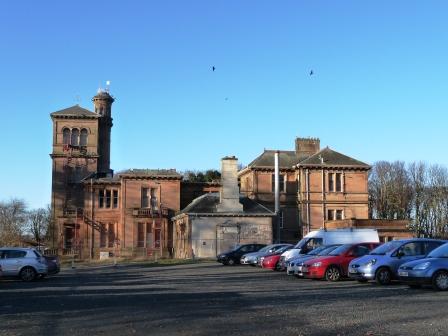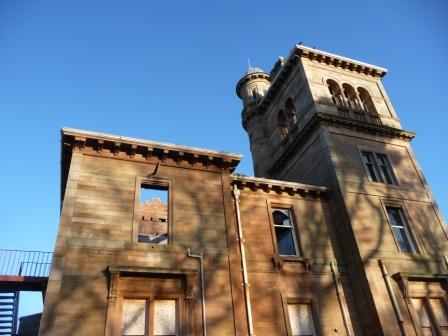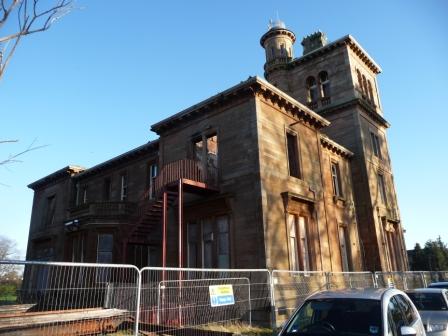House of Scottish Great Threatened with Demolition on 100th Anniversary of his Death
2.3.12
STOP PRESS: The NHS has withdrawn its application to allow further discussions to take place on the future of the building.
15.2.12
The former home of Sir William Arrol (1839-1913), one of the greatest civil engineering contractors in history and a major figure in Scottish culture, may soon face demolition, pending a decision by South Ayrshire Council this month.
Seafield House (more recently Hospital), an elegant Italianate villa, was built for Arrol in the late 1880s. The building’s design is attributed to William Clarke, ‘one of the most important of Scottish architects’, according to Professor David Walker, a leading authority on Scottish architecture. Among many important features, Seafield boasts a beautiful four-storey tower which Professor Walker describes as the ‘finest Italianate tower in Scotland.’
An application for listed building consent for full demolition was lodged with South Ayrshire Council in December 2011. Heritage groups, including SAVE Britain’s Heritage, the Architectural Heritage Society of Scotland and the Scottish Civic Trust, have notified the council of their strong objections to the proposal. In SAVE’s view, insufficient evidence has been presented to justify demolition, as demanded by the Scottish Historic Environment Policy.
Sir William Arrol, who died in 1913, was a leading figure in the golden age of Victorian bridge building, and was the contractor for some of the most awe-inspiring and iconic structures in Britain, many of which are still in use today. His works include the Forth Rail Bridge (2.5 km in length), the Tay Rail Bridge, the Titan Crane in Clydebank, the Manchester Ship Canal and London’s Tower Bridge.
During the First World War, Seafield was handed over to the British Red Cross for use as a hospital for wounded soldiers. In 1921, it was purchased by the Ayrshire Health Authority to be used as a maternity and child welfare hospital. And between 1944 and 1991, it served as a paediatric unit before briefly becoming the Health Board’s Headquarters.
Despite this noble service, the building has been badly abused. After years of neglect and a fire in 2008 – which destroyed the roof and left the interiors open to the elements – Seafield is now a roofless shell. While private owners of such a building would be required to repair it, the NHS has not done so, claiming that it is beyond repair. However, both SAVE and Scottish heritage groups point out that the stone and brickwork walls remain in sound condition and the building could still be brought back to life.
Seafield House is a much loved local landmark set in extensive grounds near the sea. It stands to the South of the town centre of Ayr in a leafy area of handsome Victorian and Edwardian houses and villas on the road which passes the Victorian racecourse (the pavilion survives though the racecourse has moved) and leads to the village of Alloway where the world famous Robert Burns’ birthplace cottage stands.
SAVE’s president, Marcus Binney says, ‘this is a building of outstanding historic and architectural interest standing in extensive grounds in a fine position near the sea. Ayr cannot afford to lose a building of this quality. Under no circumstances should permission to demolish be granted.
For further press information and images, please contact Rhiannon Tracy, SAVE Britain’s Heritage on 020 7253 3500 or office@savebritainsheritage.org or SAVE’S President, Marcus Binney on 01534 864424
NOTES TO EDITORS
William Arrol was born, the son of a spinner, in Houston, Renfrewshire, in the west central lowlands of Scotland.
SAVE Britain’s Heritage has been campaigning for historic buildings since its formation in 1975 by a group of architects, journalists and planners. It is a strong, independent voice in conservation, free to respond rapidly to emergencies and to speak out loud for the historic built environment. It has published a Buildings at Risk Register for England and Wales since 1989.






